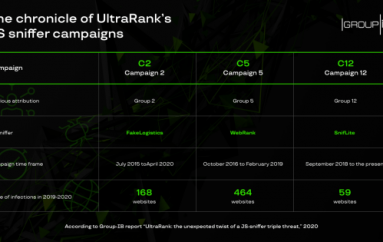
UK Identity Fraud Jumps 8% to New All-Time High
Identity fraud rose by 8% in the UK last year to hit an all-time high, with both the very young and old experiencing the biggest increases, according to Cifas.
The anti-fraud non-profit’s latest Fraudscape report for 2018 was compiled as always from the 350 organizations that submit data to its National Fraud Database.
These members recorded nearly 324,000 cases of fraud overall last year, a return to the highs of 2015 and 2016 after a dip in 2017. A Cifas official confirmed to Infosecurity that 87% of all identity fraud was committed online during last year, up from 84% the previous year.
The number of over-60s suffering identity fraud shot up 34% over the previous year, while the number of under-21s experiencing impersonation attacks jumped by 26%.
Online use was blamed for a large part of the rise, especially for the elderly, more of whom are using the internet at home, the report claimed. Younger victims’ large social media presence also exposes them to the risk of scams, it said.
There was a 41% in scams targeting plastic cards: again, older members of society are increasingly being targeted here as they’re perceived to be more likely to be approved for credit, Cifas said.
The report also detailed another sharp rise in the fraudulent use of bank accounts. The volume of cases jumped 26%, indicating a rise in money mule activity.
Often, the proceeds being laundered through these accounts come from authorized push payment (APP) scams, an increasingly popular fraud tactic in which the victim is tricked into sending money to the scammer or a third party under their control.
Incidents of APP shot up 90% between 2017 and 2018, costing victims an estimated GBP354m, according to UK Finance.
The largest number of money mules are in the age group 21-30, followed by under-21s, although all age ranges showed an increase in activity, Cifas found.
This post UK Identity Fraud Jumps 8% to New All-Time High originally appeared on InfoSecurity Magazine.





